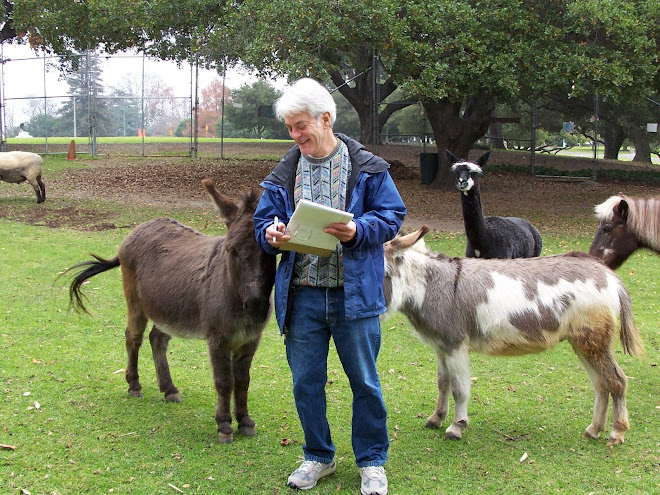
(Above: Sue Olive with her granddaughter, Shama)
When Sir Christopher Wren, the architect of St. Paul's Cathedral in London, died, he was buried in the cathedral under a headstone reading, "If you seek his monument, look around you."
The same could be said of environmental leader Sue Olive of Berkeley, who died at age 66 on Aug. 30 after a 4 ½-year battle with uterine cancer.
Her monument is the San Francisco Municipal Railway's Third Street Light Rail Project, which, as Project Manager, she spearheaded from start to finish. It brought the previously isolated minority neighborhoods of the Bay View, Hunter's Point and Visitacion Valley in contact with the rest of San Francisco.
But another important legacy is something that wasn't built. It seems incredible now; but after the 1989 Loma Prieta earthquake, CalTrans actually wanted to rebuild the collapsed Cypress Structure, which cut West Oakland off from the rest of the city.
But Olive and her husband, Michael Fried, teamed with the late grassroots organizer Chappell Hayes to mobilize the community to put the kibosh on that dumb idea.
Olive was the first female president of Urban Ecology, a band of merry pranksters with a serious purpose, which was founded in 1975.
Operating out of the Urban Ecology House at 1939 Cedar Street, they would sally forth on roller skates to distribute "Gasaholics Anonymous" parking tickets, inviting car owners to think about their dependence on automobiles.
The Urban Ecology House was instantly recognizable by the warm glow emanating from within - it seemed as if there was always a dinner party going on - and the "Veggie Car," a 1968 Pontiac GTO with a vegetable patch growing inside, parked in front.
Urban Ecology also was known for its very attractive women members, known as the Eco-Babes, of whom Olive definitely was one.
"Needless to say, they attracted a lot of men to their meetings, and I was one," says San Francisco architect Paul Okamoto, Urban Ecology's current president, who met his wife, Ariel, at the Urban Ecology House.
One of Urban Ecology's first projects was the successful campaign to redesign Milvia Street to slow cars and create safer spaces for pedestrians and bicyclists. It was considered radical then, but today every neighborhood in Berkeley is clamoring for its own bike lanes, speed bumps and roundabouts.
But just as important as what she did was the way she did it. Drawing on her Midwestern roots, she always treated people - even those with whom she disagreed - with respect and consideration. Her generosity could defuse almost any conflict.
"When you have a $600 million project like the Third Street Light Rail Project, which goes through three different communities, you have to bring all these people together, and Sue did that better than anyone," says San Francisco Supervisor Sophie Maxwell, who remembers one meeting when everyone was in a panic because of rumors of a proposed change to the project.
"Sue just kept saying very quietly, 'Just a moment, let me explain it to you.' And everyone calmed down! They were fuming just a moment before, but because they believed in her, they listened. And it turned out not to be as bad as they thought."
By the way, this "Eco-Babe" was also a proud feminist.
"When I proposed to her, she accepted," says Fried. "Then she proposed to me."















No comments:
Post a Comment